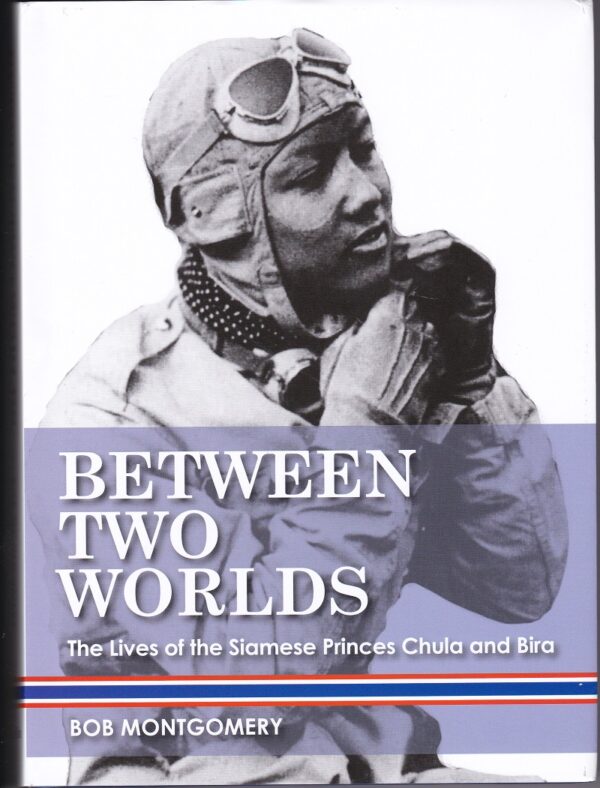
By Bob Montgomery
2023 review by James Loveridge
During the period just before and just after the Second World war two Siamese princes were prominent in British and European motor racing: Birabongse Bhanutej Bhanubabdh (Bira) and Phongchak Chakrabongse (Chula). They were related and known as cousins but Bira, who was six years younger than Chula, was in fact his uncle – the structure of the Siamese Royal Family was somewhat complicated, they were very prolific and all were princes or princesses. The early lives of the two are dealt with at some length in Bob Montgomery’s book.
A great deal of this obviously thoroughly researched book is about Bira’s racing achievements. A lot has been written about or by these two – at least five books are listed – so a good deal is known about the remarkable career of an extremely skilled driver and full results of his various competitions are given. The book duplicates much of what has been written but gives considerable detail, so painting a good picture of the motor-sport world of the time. Chula’s role was as organiser, team manager and financier, perhaps enforced in some cases as Bira was a rather feckless young man. There was no shortage of money and until later in his career Bira drove racing cars owned by their own White Mouse Stable. Chula was a very cultured, albeit somewhat arrogant, man and wrote several historical books whilst still managing Bira’s career.
At that time Grand Prix racing was dominated first by Alfa Romeo and Maserati then by Auto Union and Mercedes. Bira competed mostly in the next class, 1.5 and 2 litres. His first competitive events were in 1935 in a Riley and an MG Magnette but kicked off when he got his first ERA called Romulus. His last competitive event was in 1955, so not a bad career. He got his first win in Romulus at the Coupe du Prince Rainier at Monaco in April 1936 and never looked back, going on to win three British Racing Drivers Club Gold Stars. He had two other ERAs, Remus and Hanuman, though he raced other makes such as Delahaye, BMW, even an Austin Seven and a Maserati, but achieved his best results in one or other of the ERAs.
During the war they both stayed in England. For a while they were enemy aliens when Japan invaded Siam, but were favourably treated. Bira taught gliding to air cadets and Chula joined the Home Guard. Unable to race, Bira became a very skilled glider pilot, establishing many records. Although very short sighted, he learnt to fly, making some long-distance flights in a twin-engined Miles Gemini, including one from England to Siam. Bira was also an Olympic yachtsman, representing Siam several times.
After the war it was clear that the private entrant was facing strong competition from works teams and it seems that Chula had lost interest in motor racing. Bira tried to go it alone. He last raced an ERA in 1947 but thereafter drove other makes such as Maserati, Simca-Gordini (for which he was a works driver), Osca, Connaught and, in an unsuccessful Le Mans, Aston Martin with Peter Collins. Chula and Bira drifted apart, although they were still on affectionate terms. Chula involved himself in Siamese affairs and continued writing but died early at age 55. Bira tried other ventures including an airline but none of them were very successful and he died at 71 after having a heart attack on Barons Court underground station.
Both married, Bira four or maybe five times, I lost count, and had children. They were both very proud of their Siamese heritage and were lauded as heroes on their various visits to Siam.
However it has to be said that, despite the obvious work put into it, it is hard to suppress a feeling of irritation about this book. The four pages of the Introduction are printed on one side only so what is missing? (Actually nothing, but why do it this way?) Then there are 142 pages of solid text before 43 pages of illustrations, some not fully explained, so cross referencing is going to be tedious. A thorough reading reveals rather a lot of issues such as on page ii (Roman numerals have been used for the picture section), where Slough Grammar is properly known as “Eton” not “Eaton”. Wasn’t it T (Tommy) Wisdom not H Wisdom who wrote about motor sport (page 37). Was Percy Bradley the Secretary of the Brooklands Automobile Racing Club and a veteran motoring writer, or was that W F Bradley? (page 45). Didn’t the 1949 Jaguar XK120 have a 3.4-litre engine (actually 3,442cc)? And what was the Maserati 249F in 1955? In addition there are rather a lot of proof-reading errors such as several instances of “that” for “than” and vice versa, and Lausanne should be spelled with two “a”s – which here it is not.
All in all a very interesting book despite the multitude of shortcomings, both mentioned and unmentioned here.
Publisher: Dreoilin Books at www.dreoilinbooks.ie
Price: 40 Euros plus postage
Description: 296 pages, hardback.
ISBN:978-1-902773-36-0







Leave a Comment